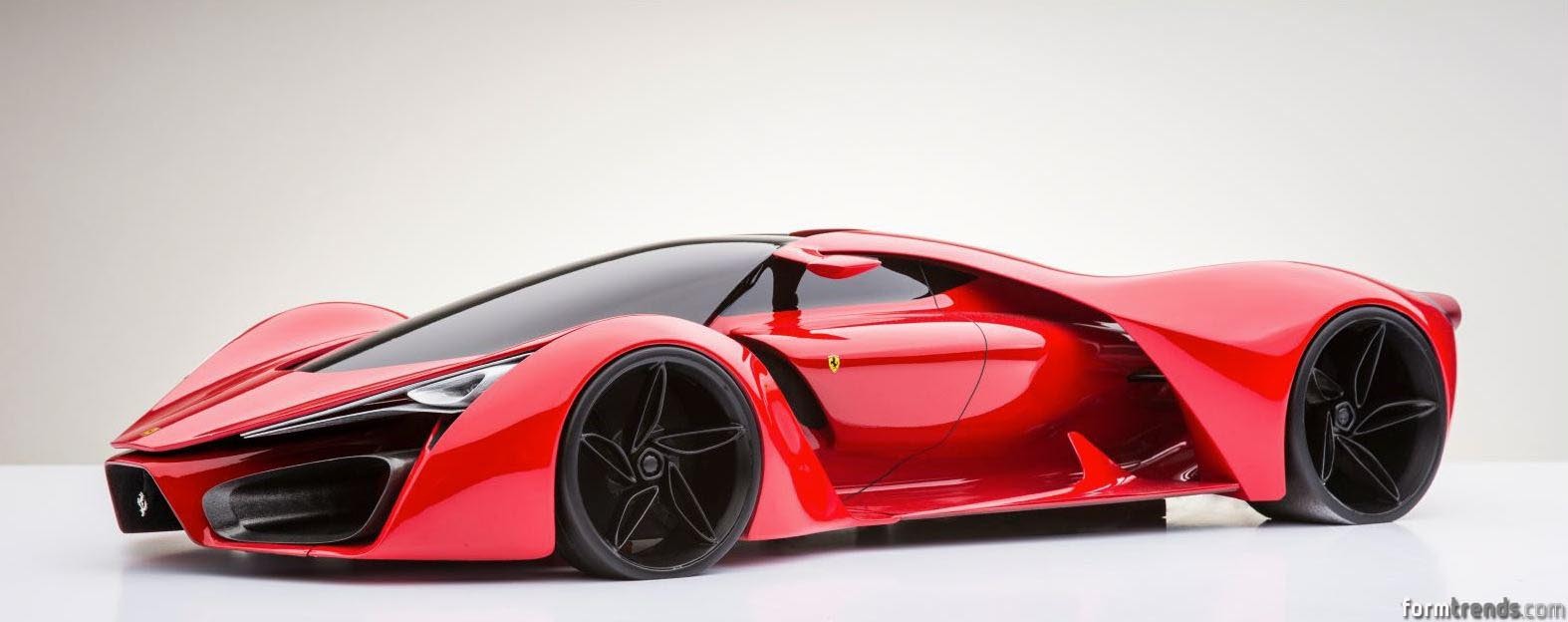For the past couple of weekends i’ve been giving my rig a complete makeover. New wheels and bearings, new paint, new box, and some built in motor wire management. Also, I went with red because as we all know red is 20% faster than the next fastest color, so immediate performance improvements will be had based on the color alone.
I wanted to make the motor wires all but disappear if I could, so i thought that if I moved the plugs closer to the motors (as in right next to the rear trucks) and hid the wires running from those plugs to the ESC inside the deck, i could achieve something close to what I wanted. The results turned out pretty good.
I also wanted a new box, so i did this with that in mind. I sculpted a box out of Bondo fiberglassing resin, but i’m not 100% happy with the way the box turned out, so i’m going to try making another one by vacuum forming some ABS. Functionally the box is amazing and works great, but its a little wavy and lumpy so it doesn’t quite have the polish i’m looking for. Also, Bondo is absolutely horrible stuff to work with and ABS is much less expensive and likely much tougher.
I started by grabbing my dremel and creating the wire channels:
I used a solid core wire for this, so it was springy and had to be clamped while the resin set. I had to do one side, then the other, then the center section. The blue tape kept the resin from sticking to the blocks so when it was hardened they just came right off leaving a fairly smooth surface on the resin.
first side:
then the second side:
both sides done:
then I clamped the middle and filled in the rest of the channel with resin:
so then a final top coat to fill in all the gaps:
once dried it can be sanded smooth:
then i went back over it with a finer grit:
taped it all up for a coat of paint:
So then it was time to make a mold for this new box. The plan was to carve one out of styrofoam sheets, tape it all up with blue tape, spray on some release agent (i used cooking spray), then start layering on fiberglass cloth and resin.
first step was to make a block big enough to carve down into a box shape. Loctite spray adhesive laminates styrofoam board pretty well and surprisingly doesn’t melt the foam at all. It also works very quickly.
it also cuts and sands very easily. I had no idea you could sand styrofoam, but you can. I also had some layout drawings on the foam block to remind me of where things will go.
so then i needed to cut a hole out of the form so that it could lay over the wires poking out of my deck and be in its proper position. The saran wrap was used to wrap up the foam before i taped it all up to help keep the bondo resin off the foam, as the foam will dissolve quickly if any resin touches it, and taping can sometimes have leaks.
so then i taped up the board and the foam and taped the foam to the board, then sprayed the whole thing with cooking spray:
then it was time to lay on the fabric and dab in the resin with a brush:
I’d rather not go into detail about how to apply fiberglass resin. I chose to work with Bondo because it was cheap and readily available at Lowes and has easy to follow directions. It also gets everywhere and the timing is such that i wasn’t able to get pictures of the application process. It actually is very simple to use, but I will never work with it again for making boxes. Its horrible. The fumes are terrible, and you need what seems like an endless supply of gloves and disposible paint brushes. I could go on and on but rest assured Bondo is awful.
Anyway, the final result wasn’t that terrible. I ended up with this before sanding:
then after a dozen sanding and resin reapplication sessions, I ended up with something only slightly smoother and more attractive:
I did go back a few more times and reinforce the corners and things but ultimately i gave up trying to make it look any better because at this point i was really hating the Bondo and was wishing i had just flumped some hot plastic over a vac table instead.
So then i painted everything. EVERYTHING. My only regret with the painting is that i don’t yet have a drying booth. I plan to make a small one that will be powered by either my heat gun or a repurposed space heater. Florida humidity is such that spray paint will literally never cure outside unless in direct sunlight, but it rained all weekend i can’t stink up the house with paint smell, so i just had to wait forever. I chose Duplicolor spray paint because it can easily provide a factory like finish without buffing and is pretty forgiving about temp and humidity as long as you bring it inside the house to cure after it has mostly dried.
so then the paint finally dried and it was time to reassemble everything. I started by packing the box with all of the electronics. Drilled holes for the charging port and power button, and a square hole was dremeled out for the volt meter. I made some little extension cords for the ESC out of flexible silicone wire, as seen on onloop’s motors:
but one final touch was to replace the leads on the motors with longer, redder, more flexible silicone ones. This wasn’t just aesthetic, i needed flexible wires here and the propdrives have very non-flexible, very short leads. That’s no good for this application because they’ll be bending around as the truck leans back and forth. But they also needed to be red because it makes them 20% faster.
then after assembling the wheels, trucks, and drive system, it was time to mount the box and tape the leads together:
so now it was complete. Here’s a few shots of the complete build:
So to recap, this actually turned out pretty well despite the Bondo. If you look closely, though, you can see why Bondo is crap. It shrinks, warps, and flakes. And oh my god the fumes. Its just terrible. Next time I have to do a drill and fill for wiring channels, i’m definitely using epoxy based resin and probably will spring for the good stuff like West System 105 or something. Also, don’t waste your time making a box with fiberglass using this mold method. Do an inverse mold for a smoother result or better yet vacuum mold an ABS sheet instead.

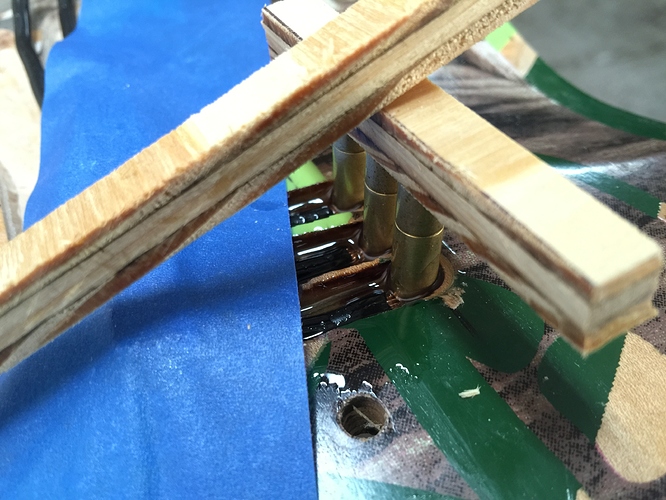

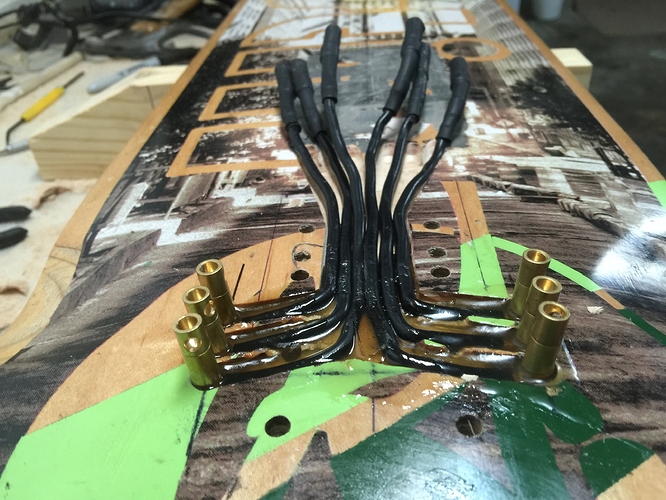
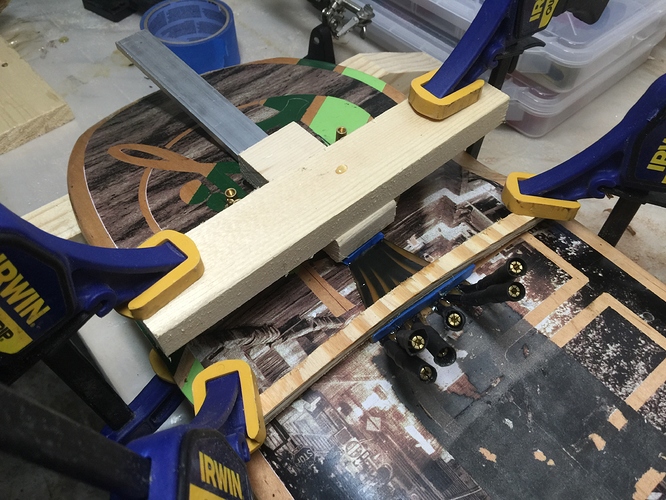

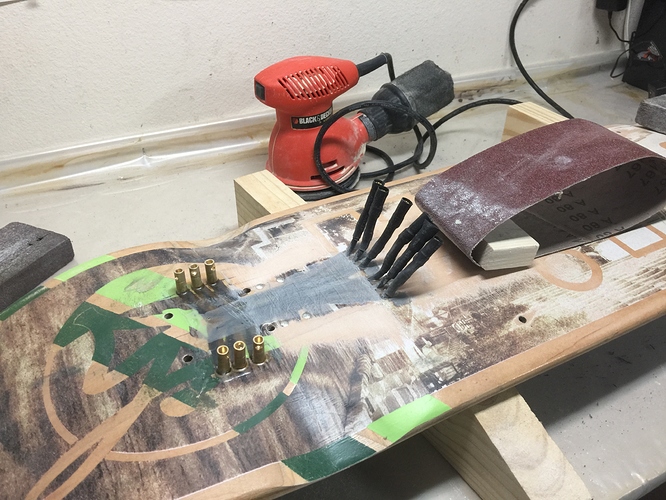




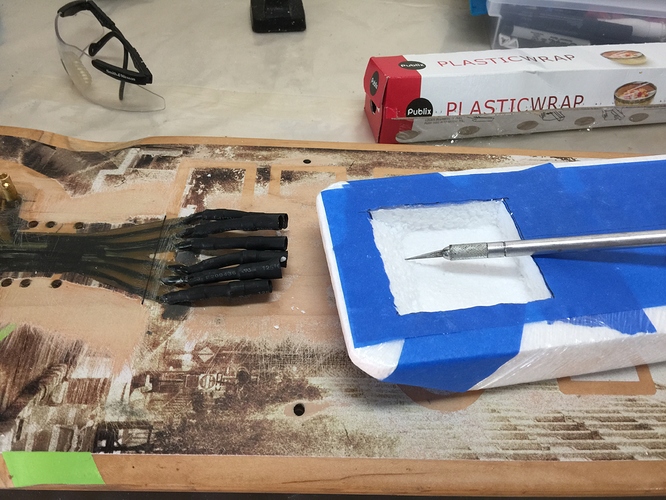

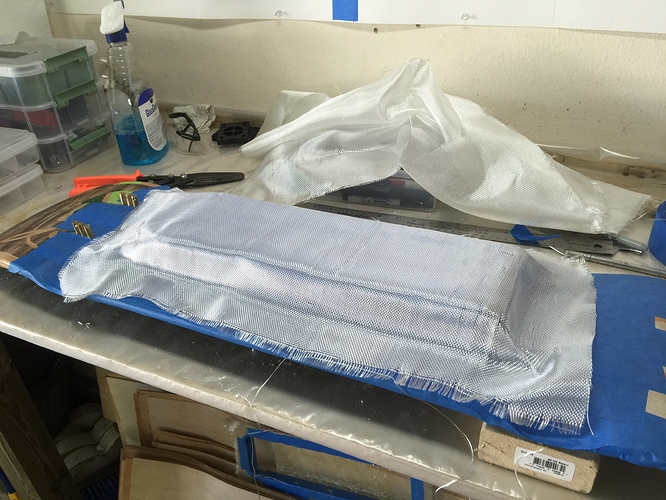


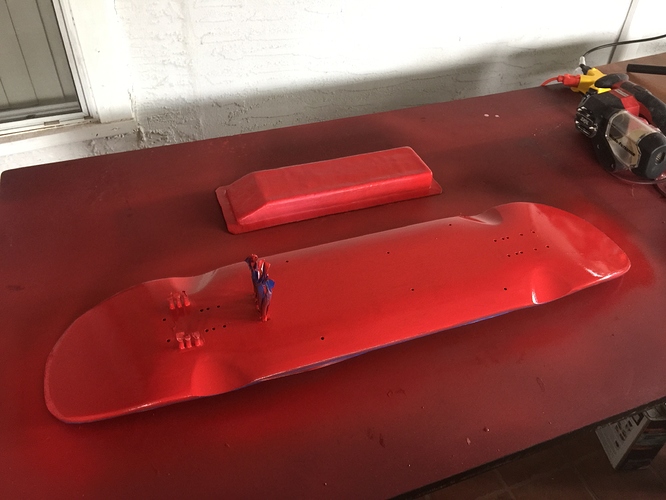
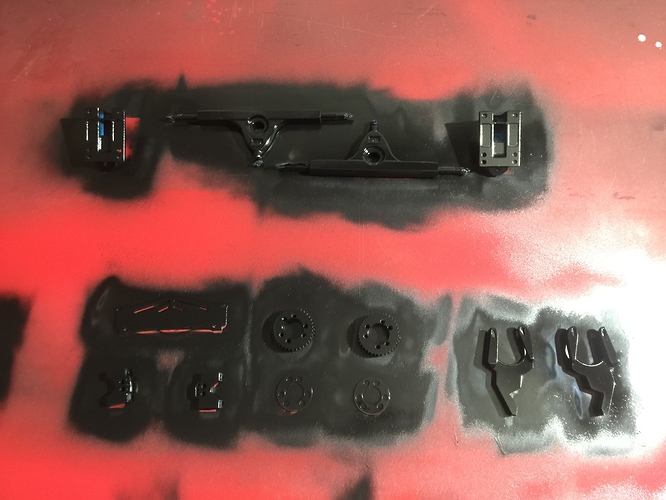
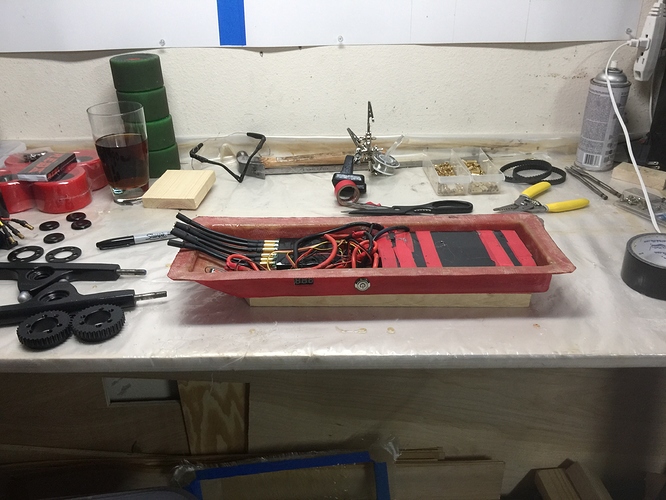
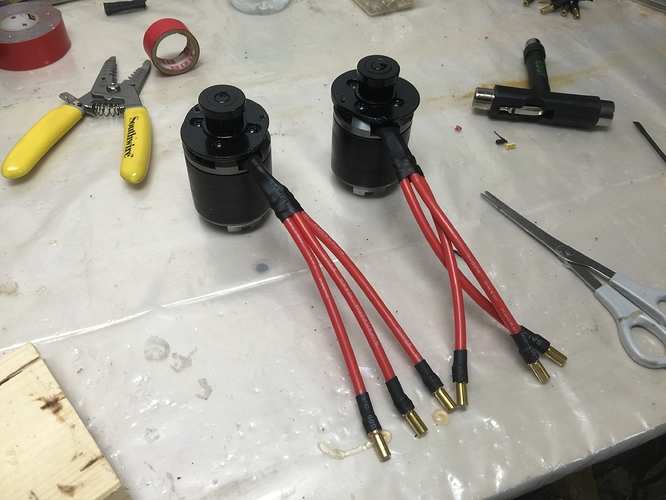
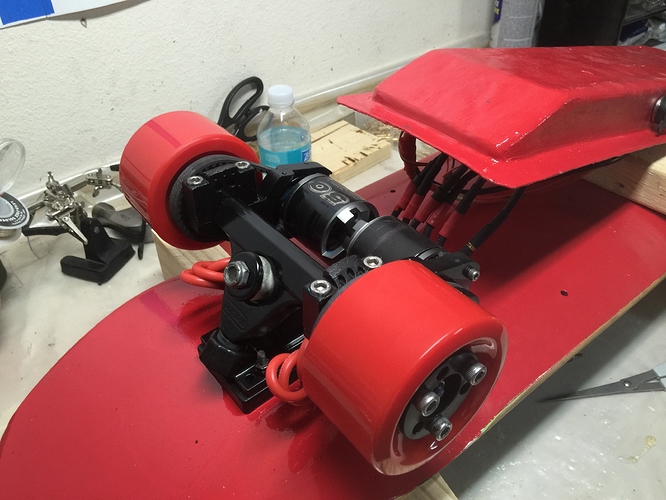

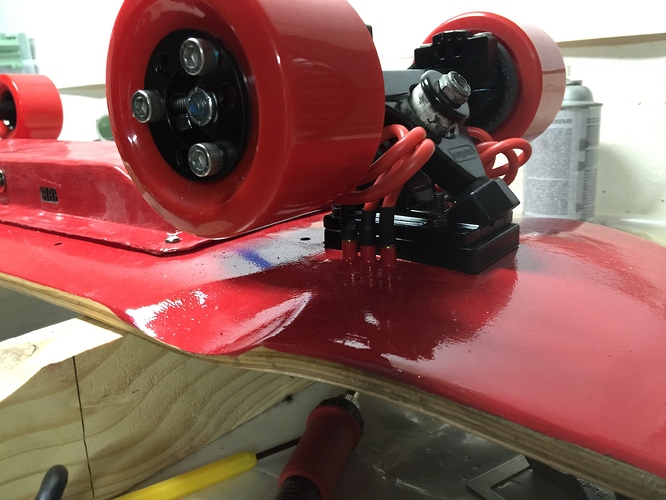
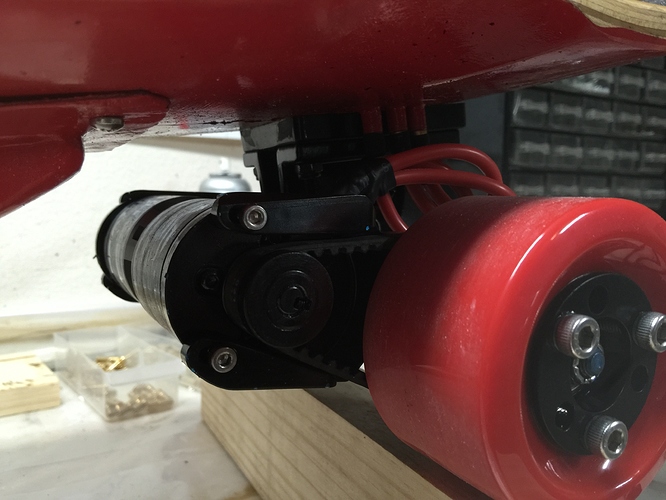


 Like this. Not sure on size they used though. Doesn’t seem to follow standard awg sizes - measured in flat width.
Like this. Not sure on size they used though. Doesn’t seem to follow standard awg sizes - measured in flat width. But now all I can think about now is Ferrari
But now all I can think about now is Ferrari